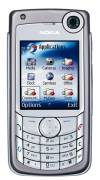I've recently been doing some work with performance counters in .NET and discovered the support for them in the framework is a bit nasty.
One example is that the only way to add counters is through the PerformanceCounterCategory.Create method so you can't append a new counter to an existing category. You have to copy all the counters from the old category, add you new counter, delete the old category and then recreate the category with the new list of counters.
Another example is that in order to use any of the fraction based counters like averages you have to add two separate counters, one for the numerator and one for the denominator.
All very long winded anyway so I decided that I'd wrap up the creation of the counters and categories along with a few other bits in a helper class. That was the plan but it fell at the first hurdle - trying to create categories.
The symptom
This, seemingly innocuous bit of code...
if(!PerformanceCounterCategory.Exists(categoryName))
{
PerformanceCounterCategory.Create(categoryName, categoryName, new CounterCreationDataCollection() );
}
if(!PerformanceCounterCategory.CounterExists(counterName, categoryName))
{
//add a counter
}
...was yielding the following error on line 6:
System.InvalidOperationException: Category does not exist.
at System.Diagnostics.PerformanceCounterLib.CounterExists(String machine, Str
ing category, String counter)
at System.Diagnostics.PerformanceCounterCategory.CounterExists(String counter
Name, String categoryName, String machineName)
at System.Diagnostics.PerformanceCounterCategory.CounterExists(String counter
Name, String categoryName)
i.e. three lines after the statement creating a category it says the category doesn't exist. Odd, I thought, so I knocked together a quick Snippet Compiler script:
string categoryName = "foo";
string counterName = "bar";
if(PerformanceCounterCategory.Exists(categoryName))
PerformanceCounterCategory.Delete(categoryName);
WL("Category " + categoryName + " exists? " + PerformanceCounterCategory.Exists(categoryName));
PerformanceCounterCategory.Create(categoryName, categoryName, new CounterCreationDataCollection() );
WL("Category " + categoryName + " exists? " + PerformanceCounterCategory.Exists(categoryName));
try
{
WL("Counter foobar exists? " + PerformanceCounterCategory.CounterExists(counterName, categoryName));
}
catch(Exception ex)
{
WL(ex.ToString());
}
RL();
Further oddness arose from this because the call to PerformanceCounterCategory.Exists after the Create actually gives the correct response, it is only the CounterExists method that fails. I immediately suspected some sort of caching issue.
The cause
After having a poke around with Lutz Roeder's .NET Reflector I discovered that all the Performance Counter classes make use of an internal class called PerformanceCounterLib which has a few hashtables it uses to cache information about the categories and their counters.
The hashtable concerned here was the CategoryTable which, on adding a category for he first time, does not update properly. When the CounterExists call runs this line:
if(this.CategoryTable.ContainsKey(category))
it fails throwing the error however the Exists call has this line:
return (PerformanceCounterLib.IsCustomCategory(machineName, categoryName)
|| PerformanceCounterLib.CategoryExists(machineName, categoryName));
the right part of this calls the same CategoryTable.ContainsKey however the IsCustomCategory on the left accesses the registry directly and returns the correct answer - true.
Why the CounterExists doesn't call this method itself and opts instead to provide its own implementation i've no idea.
The solution
Luckily the PerformanceCounter.CloseSharedResources() method flushes all these internal caches so the calls all return the same answer. Adding a call to this straight after my PerformanceCounterCategory.Create solved the problem.

 and selecting "Native Win32 interface for Win NT/2000/XP". Re-run the wizard again from the EAC menu to configure your drives.
and selecting "Native Win32 interface for Win NT/2000/XP". Re-run the wizard again from the EAC menu to configure your drives. After this finishes you get a status log that gives you a quality percentage, AccurateRip confidence and and errors for each track.
After this finishes you get a status log that gives you a quality percentage, AccurateRip confidence and and errors for each track. Thankfully the very nice people responsible for the
Thankfully the very nice people responsible for the  Storage space is only getting cheaper and today you can pick up a 500GB external hard disk, enough for 700 uncompressed albums, for less than £80; the Western Digital
Storage space is only getting cheaper and today you can pick up a 500GB external hard disk, enough for 700 uncompressed albums, for less than £80; the Western Digital  I've recently been going through the yearly trauma of picking a new phone as my free upgrade. It's the same every time - there is never one phone that meets all my criteria so I have to go for the best compromise. The phone I'm upgrading is a Nokia 6680 which is a rather large Symbian smartphone, lacking in both the processor speed and memory stakes. The criteria for my new phone are therefore:
I've recently been going through the yearly trauma of picking a new phone as my free upgrade. It's the same every time - there is never one phone that meets all my criteria so I have to go for the best compromise. The phone I'm upgrading is a Nokia 6680 which is a rather large Symbian smartphone, lacking in both the processor speed and memory stakes. The criteria for my new phone are therefore: I've only ever had Nokia phones and have stuck with them mainly because they were a lot more usable than other brands. Nokia's current offerings were leaving me a bit cold however so I've been thinking "surely the other brands must have caught up" and indeed Sony Ericsson's sales are topping Nokia's in the UK at the moment. Anyway I thought I'd give another brand a try so I went for a Samsung U600 as I like the look of their sliders and although it's not a smartphone it is from their new "Ultra Edition 2" line so I thought it would meet my needs.
I've only ever had Nokia phones and have stuck with them mainly because they were a lot more usable than other brands. Nokia's current offerings were leaving me a bit cold however so I've been thinking "surely the other brands must have caught up" and indeed Sony Ericsson's sales are topping Nokia's in the UK at the moment. Anyway I thought I'd give another brand a try so I went for a Samsung U600 as I like the look of their sliders and although it's not a smartphone it is from their new "Ultra Edition 2" line so I thought it would meet my needs. So now I'm back to square one and thinking I'm either going to get a Nokia or another brand only if it's running Symbian so I can be assured of a certain amount of base functionality. So the next two candidates were the Nokia 6300 or the Sony Ericsson W950i - the Sony is missing the all important camera and the Nokia isn't running Symbian so not clear cut by any means. I may have finally found the answer with the Nokia 6120 which is a smartphone, has a camera and is a centimetre narrower and half a centimetre thinner than the 6680. Only problem with this one is that it's not currently available on Orange so I've got to wait for it - Doh!
So now I'm back to square one and thinking I'm either going to get a Nokia or another brand only if it's running Symbian so I can be assured of a certain amount of base functionality. So the next two candidates were the Nokia 6300 or the Sony Ericsson W950i - the Sony is missing the all important camera and the Nokia isn't running Symbian so not clear cut by any means. I may have finally found the answer with the Nokia 6120 which is a smartphone, has a camera and is a centimetre narrower and half a centimetre thinner than the 6680. Only problem with this one is that it's not currently available on Orange so I've got to wait for it - Doh! Well, i'm back. Thanks to Yahoo! and the BBC for a great weekend. It didn't get off to the best of starts what with the lightning and broken WiFi and all but everyone made the best of it.
Well, i'm back. Thanks to Yahoo! and the BBC for a great weekend. It didn't get off to the best of starts what with the lightning and broken WiFi and all but everyone made the best of it.
